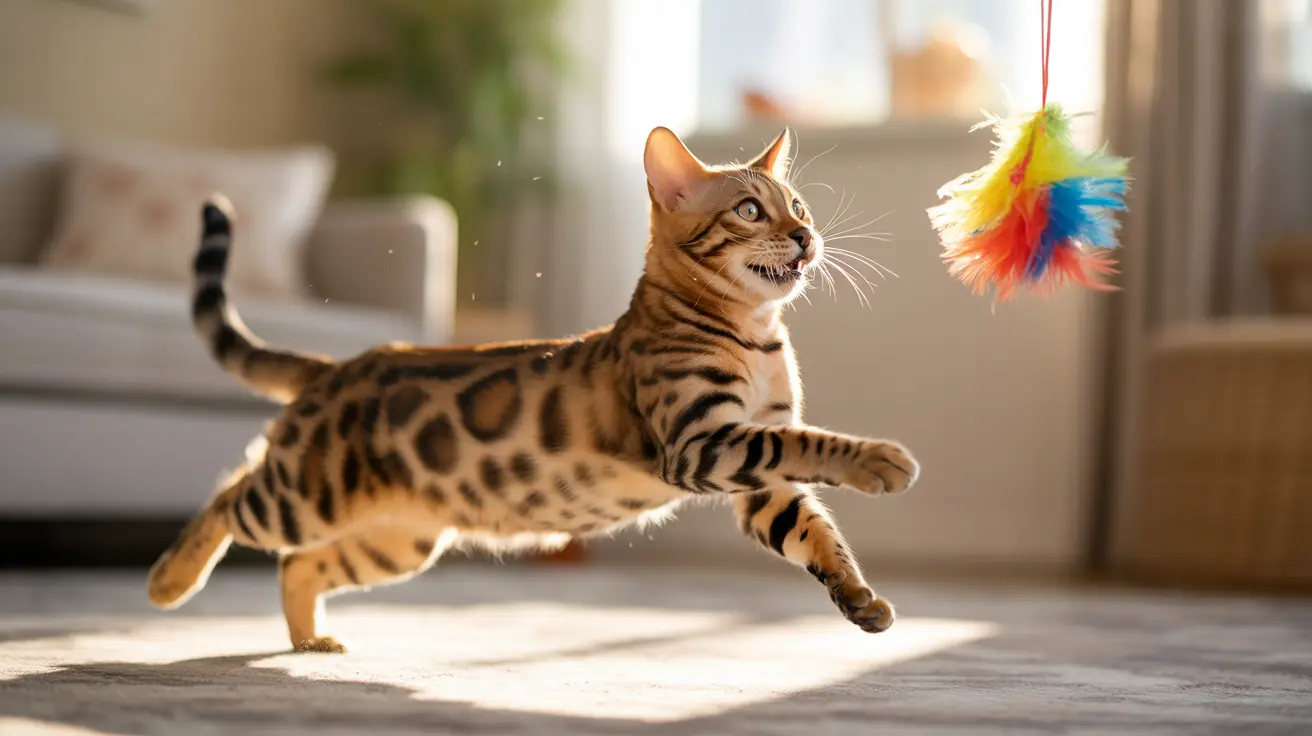The Playful Side of Sideways Running
Most commonly, cats run sideways during play and moments of excitement. This behavior is especially prevalent in kittens and younger cats, who use it as part of their natural play repertoire. When your cat runs sideways with a relaxed body posture and bouncy movement, they're likely inviting you or other pets to join in the fun.
During these playful episodes, you might notice:
- A loosely curved spine
- Ears pointed forward
- Tail held high with a slight curve
- Quick, bouncy movements
- Playful pouncing or batting at toys
Defensive Posturing and Fear Response
Sometimes, cats run sideways as a defensive mechanism when they feel threatened or startled. This behavior is part of their evolutionary survival strategy – by turning sideways and arching their back, cats can appear larger and more intimidating to potential threats.
Signs that your cat's sideways running is fear-based include:
- Puffed-up fur (piloerection)
- Flattened ears
- Arched back
- Dilated pupils
- Hissing or growling
The Famous Feline "Zoomies"
Sudden bursts of energy, commonly known as "zoomies," often involve sideways running. These episodes typically occur after naps or during periods of pent-up energy release. While they might seem random, they're a normal part of feline behavior and help cats expend excess energy.
Medical Considerations and Warning Signs
While most instances of sideways running are completely normal, certain situations warrant veterinary attention. If your cat's sideways movement appears uncoordinated or is accompanied by other concerning symptoms, it could indicate an underlying health issue.
Watch for these red flags:
- Persistent wobbling or loss of balance
- Head tilting
- Confusion or disorientation
- Inability to walk straight even when calm
- Lethargy or reduced appetite
Creating a Safe Environment for Natural Behavior
To support your cat's natural inclination for sideways running and play:
- Provide plenty of open space for running and playing
- Maintain regular play sessions to prevent energy build-up
- Ensure the environment is free from hazards
- Respect your cat's space when they show signs of fear or aggression
Frequently Asked Questions
Why do cats run sideways or crab walk when they are playing?
Cats run sideways during play as a way to express excitement and invite interaction. This behavior helps them practice important motor skills while having fun and is completely normal, especially in younger cats.
How can I tell if my cat is running sideways because it's scared or threatened?
A scared cat will display additional signs like flattened ears, puffed-up fur, and possibly hissing or growling. Their body will appear tense rather than relaxed, and they may try to maintain distance from the perceived threat.
Can sideways running in cats be a sign of health problems like neurological disorders?
While most sideways running is normal behavior, uncoordinated or persistent sideways movement accompanied by other symptoms like head tilting or loss of balance could indicate neurological issues and should be evaluated by a veterinarian.
What does it mean when my cat runs sideways with an arched back and a fluffed tail?
This posture can indicate either play or defensive behavior. Look for additional cues: if accompanied by relaxed ears and bouncy movements, it's likely play; if accompanied by hissing or flat ears, it's defensive.
How should I respond if my cat is running sideways aggressively or angrily?
Give your cat space and avoid approaching them. Remove any triggers if possible, and wait until they calm down. Never chase or corner a cat displaying aggressive behavior, as this could lead to injury.
Understanding your cat's sideways running behavior helps strengthen your bond and ensures you can respond appropriately to their needs, whether they're in a playful mood or feeling threatened. By recognizing the context and accompanying body language, you can better support your feline friend's emotional and physical well-being.






